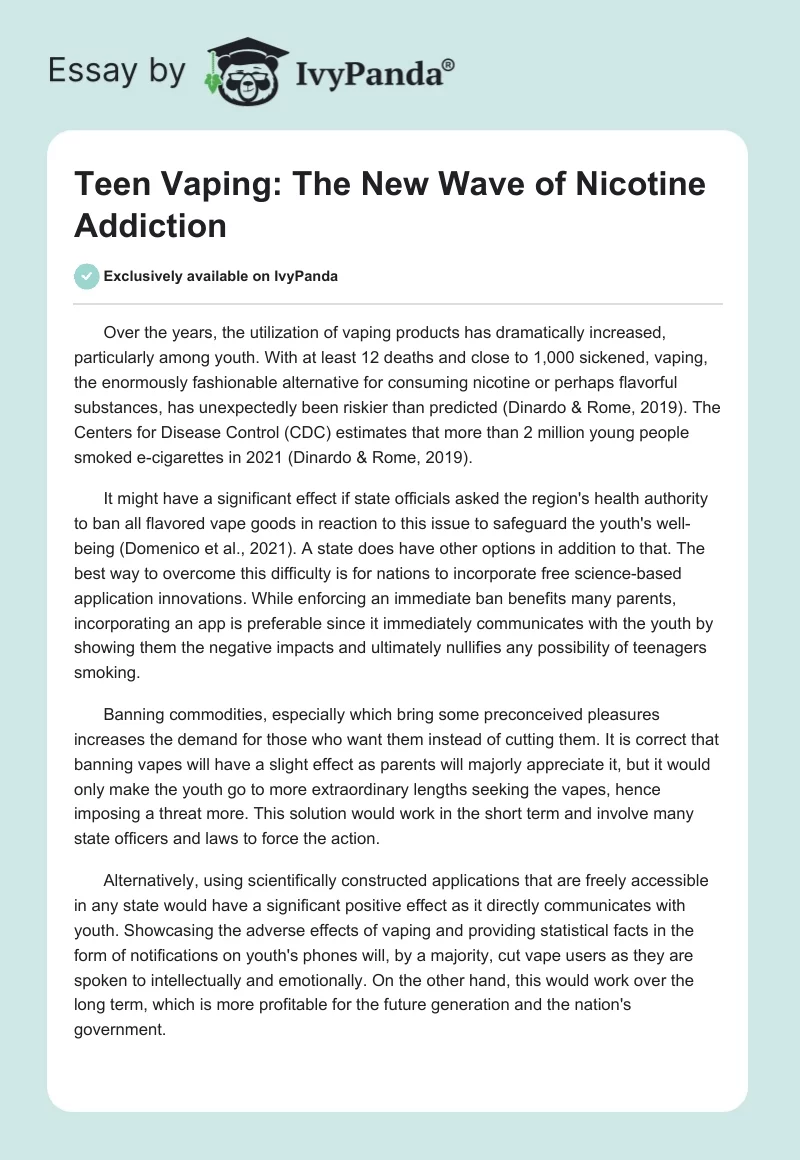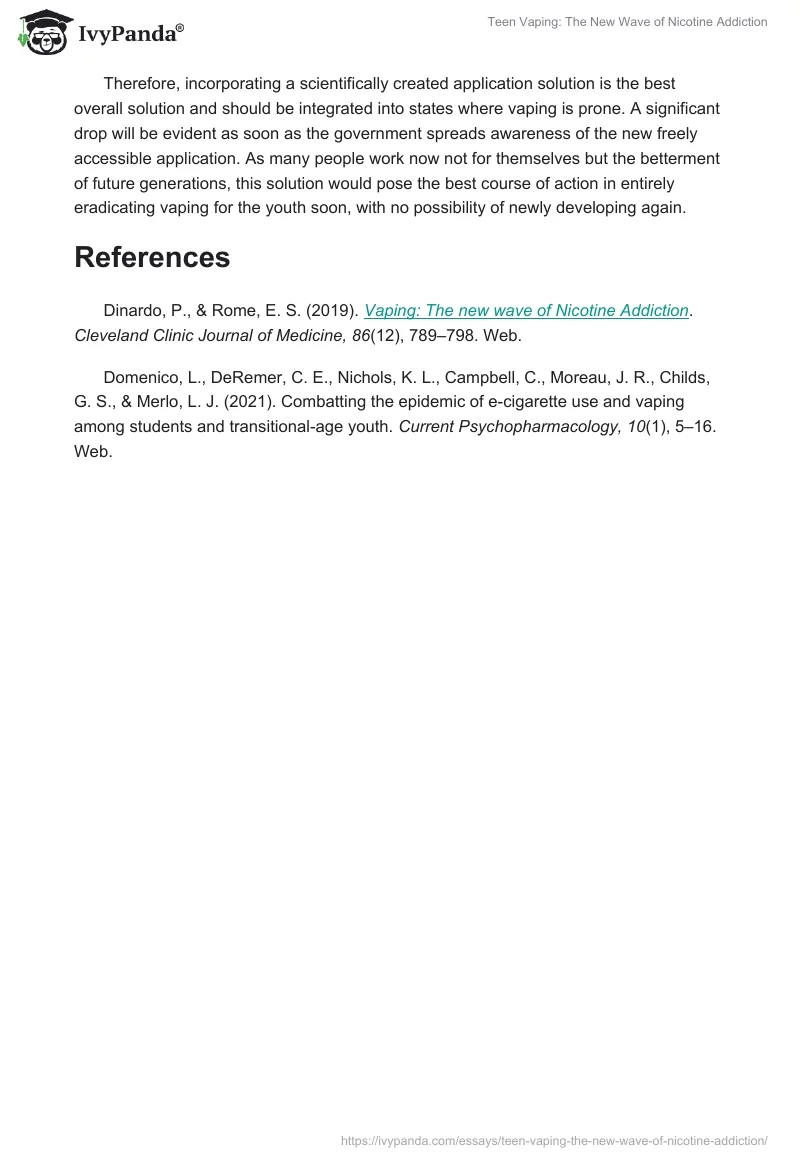Over the years, the utilization of vaping products has dramatically increased, particularly among youth. With at least 12 deaths and close to 1,000 sickened, vaping, the enormously fashionable alternative for consuming nicotine or perhaps flavorful substances, has unexpectedly been riskier than predicted (Dinardo & Rome, 2019). The Centers for Disease Control (CDC) estimates that more than 2 million young people smoked e-cigarettes in 2021 (Dinardo & Rome, 2019).
It might have a significant effect if state officials asked the region’s health authority to ban all flavored vape goods in reaction to this issue to safeguard the youth’s well-being (Domenico et al., 2021). A state does have other options in addition to that. The best way to overcome this difficulty is for nations to incorporate free science-based application innovations. While enforcing an immediate ban benefits many parents, incorporating an app is preferable since it immediately communicates with the youth by showing them the negative impacts and ultimately nullifies any possibility of teenagers smoking.
Banning commodities, especially which bring some preconceived pleasures increases the demand for those who want them instead of cutting them. It is correct that banning vapes will have a slight effect as parents will majorly appreciate it, but it would only make the youth go to more extraordinary lengths seeking the vapes, hence imposing a threat more. This solution would work in the short term and involve many state officers and laws to force the action.
Alternatively, using scientifically constructed applications that are freely accessible in any state would have a significant positive effect as it directly communicates with youth. Showcasing the adverse effects of vaping and providing statistical facts in the form of notifications on youth’s phones will, by a majority, cut vape users as they are spoken to intellectually and emotionally. On the other hand, this would work over the long term, which is more profitable for the future generation and the nation’s government.
Therefore, incorporating a scientifically created application solution is the best overall solution and should be integrated into states where vaping is prone. A significant drop will be evident as soon as the government spreads awareness of the new freely accessible application. As many people work now not for themselves but the betterment of future generations, this solution would pose the best course of action in entirely eradicating vaping for the youth soon, with no possibility of newly developing again.
References
Dinardo, P., & Rome, E. S. (2019). Vaping: The new wave of Nicotine Addiction. Cleveland Clinic Journal of Medicine, 86(12), 789–798. Web.
Domenico, L., DeRemer, C. E., Nichols, K. L., Campbell, C., Moreau, J. R., Childs, G. S., & Merlo, L. J. (2021). Combatting the epidemic of e-cigarette use and vaping among students and transitional-age youth. Current Psychopharmacology, 10(1), 5–16. Web.


